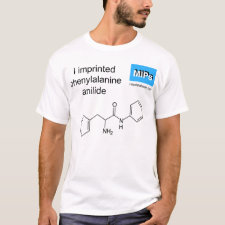
Authors: Lin JM, Nakagama T, Uchiyama K, Hobo T
Article Title: Enantioseparation of D,L-phenylalanine by molecularly imprinted polymer particles filled capillary electrochromatography.
Publication date: 1997
Journal: Journal of Liquid Chromatography & Related Technologies
Volume: 20
Issue: (10)
Page numbers: 1489-1506.
DOI: 10.1080/10826079708010989
Alternative URL: http://www.informaworld.com/10.1080/10826079708010989
Abstract: The chromatographic properties of molecularly imprinted polymer filled capillary electrochromatography (CEC) have been studied. The network polymers were prepared using L-phenylalanine anilide (L- pheAN) or L-phenylalanine as print molecules. Methacrylic acid was used as functional monomer, such that the acid function of monomer interacts ionically with the amine function and via hydrogen bonding with the carboxyl group of the print molecules. Ethylene glycol dimethacrylate was used as cross-linker and the reaction initiator was α, α'-azobis(isobutyronitrile). The obtained polymers were ground and sieved to particles < 10 μm for filling into capillary for CEC and < 30 μm for packing into high performance chromatographic columns. The separations of D,L-phenylalanine by using the molecularly imprinted polymers against L-pheAN and L- phenylalanine were compared. It was interesting to find that the resolution of D,L-phenylalanine using L-pheAN printed polymer was higher than that using L-phenylalanine printed polymer. The selected polymers obtained were tested in CEC. Some aromatic amino acids, such as D,L-phenylalycine, D,L-tyrosine etc., could be separated to some extent. This method demonstrated that the molecularly imprinted polymer can also be used in CEC for the separation of enantiomers. The peak shape and the resolution of D,L-phenylalanine by this proposed method were batter than those by the HPLC method
Template and target information: L-phenylalanine anilide, L- pheAN, L-phenylalanine, L-Phe



Join the Society for Molecular Imprinting

New items RSS feed
Sign-up for e-mail updates:
Choose between receiving an occasional newsletter or more frequent e-mail alerts.
Click here to go to the sign-up page.
Is your name elemental or peptidic? Enter your name and find out by clicking either of the buttons below!
Other products you may like:
 MIPdatabase
MIPdatabase









